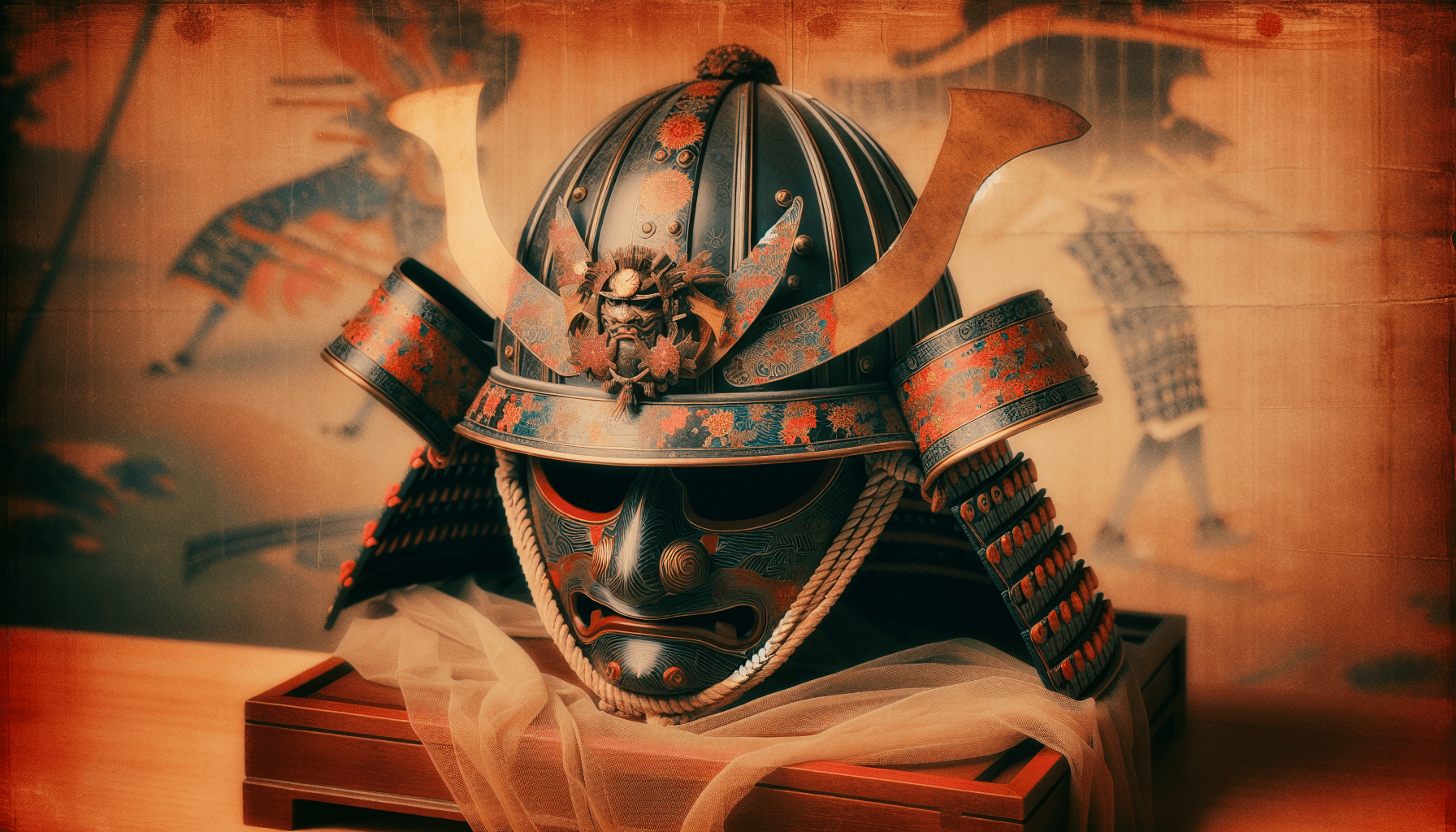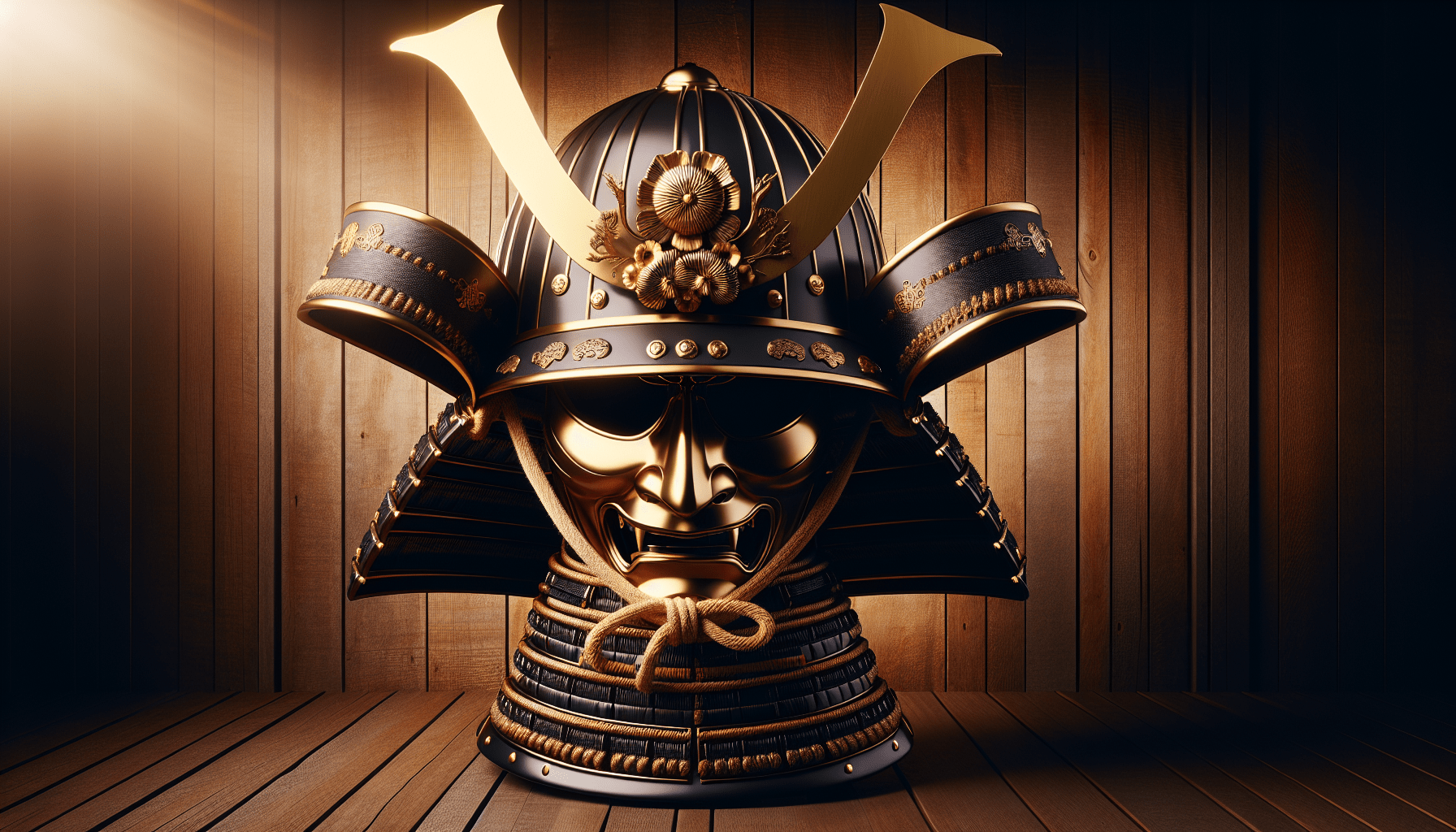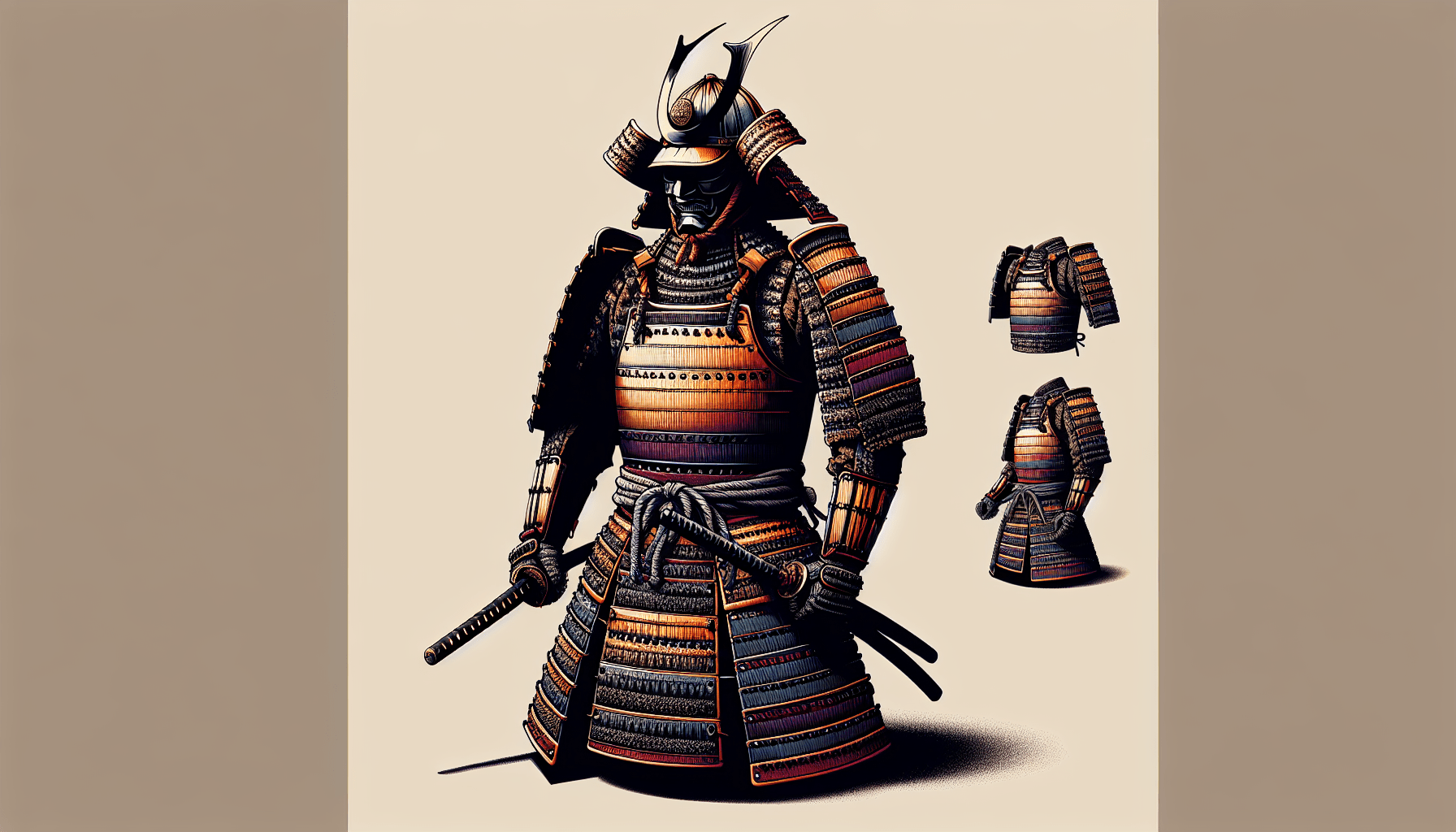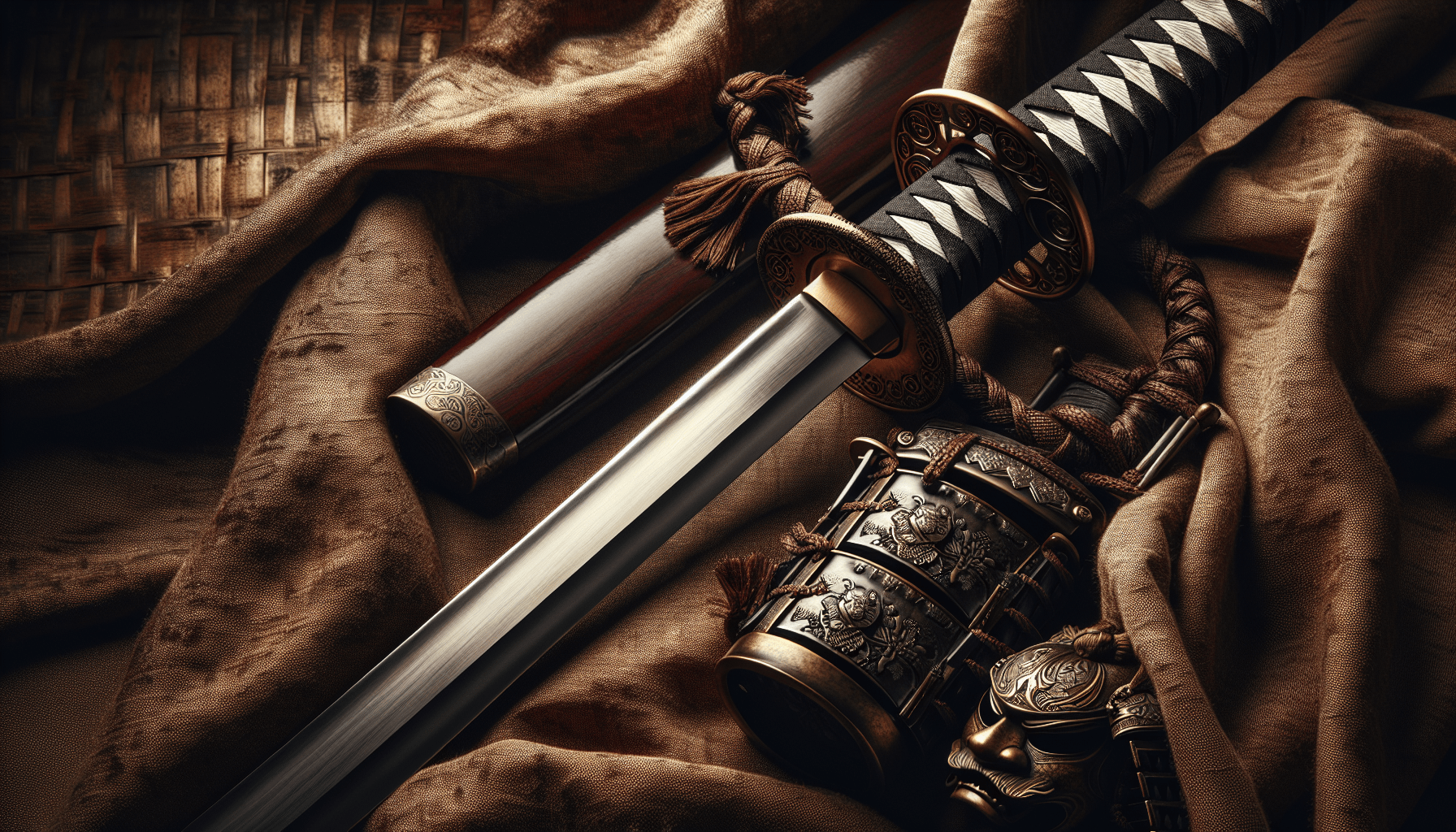
Samurai helmets, or kabuto, encompass a fascinating blend of artistry and history, showcasing the remarkable creativity of Japanese craftsmanship. These unique pieces have their roots dating back to the fifth century and serve more than just a protective function; they are symbols of status and culture, especially during Japan’s Edo period. In this exploration of kawari kabuto, discover the intricate designs and bold decorations that characterize these stunning helmets, which often captivated audiences during festivities rather than battles.
This article will walk you through some of the most astonishing and peculiar samurai helmets ever made, highlighting their various styles and meanings. Each helmet tells a story, revealing the artistry behind its creation and the significance it held within samurai society. From butterfly and dragonfly designs to the elegance of sun or moon shapes, these helmets not only dazzled onlookers but also represented the values and status of the warriors who wore them.
Introduction to Kawari Kabuto
Definition and Overview of Samurai Helmets
Kawari Kabuto refers to the unique and often fantastical variations of samurai helmets. Traditionally known as kabuto, these helmets were an essential component of a samurai’s armor, blending functionality with artistry. Each kabuto was meticulously crafted to not only protect the warrior’s head but also to convey status, strength, and individuality. As you explore the world of kawari kabuto, you’ll discover how these helmets are much more than mere protective gear; they are symbols of the samurai’s culture and identity.
Historical Context of Kabuto in Samurai Culture
The tradition of wearing kabuto dates back to ancient Japan, where helmets served both practical purposes in combat and symbolic roles during periods of peace. During the feudal era, samurai warriors relied on kabuto for protection in battle. However, when Japan entered a long period of peace, the focus shifted towards ceremonial and decorative aspects of these helmets. In this way, kabuto evolved into an expression of the samurai’s social status and artistic prowess.
Significance of Kawari Kabuto in Modern Understanding
Today, kawari kabuto represents an intricate blend of history, art, and culture that continues to captivate enthusiasts. These helmets have become icons of Japanese heritage, drawing attention from art collectors, historians, and pop culture alike. Understanding the significance of kawari kabuto helps you appreciate the rich tapestry of samurai culture and its enduring legacy in modern Japan.
Historical Origins of Samurai Helmets
Early Examples and Archaeological Findings
Evidence of early kabuto can be traced back to the 5th century, with archaeological finds in ancient tombs revealing these intricately designed helmets. These early examples show that even at the outset, samurai helmets were crafted with both a keen eye for aesthetics and a strong emphasis on functionality. The discovery of these relics enriches your understanding of how the samurai ethos developed over centuries.
Evolution of Helmet Design from the 5th Century
As Japan’s warfare tactics and societal structures evolved, so too did the design of kabuto. From simple conical forms to elaborate constructions featuring multiple layers and intricate decorations, kabuto underwent significant transformations. By the Edo period, these helmets became incredibly elaborate, showcasing the craftsmanship of the artisans while symbolizing the wearer’s importance within the samurai hierarchy.
Influence of Warfare on Helmet Development
The design of kabuto was heavily influenced by the ongoing conflicts and warfare of different periods. Early helmets were designed for functionality, offering maximum protection in battle. However, during peaceful times, the focus shifted towards elaborate decorations and symbolism. This dual purpose highlights a fascinating aspect of samurai culture: the balance between martial duty and artistic expression.
Cultural Significance of Kabuto

Symbolism in Samurai Ethos
Kabuto are deeply ingrained in the samurai ethos, representing valor, loyalty, and honor. When you see a kabuto, think of the samurai warrior’s commitment to their lord and the willingness to face challenges head-on. The decorative elements of a kabuto often reflect the ideals and values held by the samurai, making each helmet a personalized statement of its wearer’s beliefs.
Expressions Associated with Kabuto
Kawari kabuto inspired numerous Japanese expressions that resonate with the culture. One such expression, “Katte kabuto no o o shimeyo,” translates to “Tighten the string of the kabuto after winning the war,” signifying the importance of preparation and resilience. These idioms reflect the timeless wisdom of the samurai, often drawing parallels to modern-day challenges.
Kawari Kabuto as Status Symbols
In modern times, kawari kabuto serves as a potent reminder of social hierarchy within the samurai class. Owning or displaying a particularly impressive kabuto can symbolize wealth and influence. As you delve into this cultural significance, consider how these helmets reflect not only the artistry of the time but also the social dynamics that shaped feudal Japan.
Design Elements of Samurai Helmets
Structure and Materials Used in Construction
Kawari kabuto are known for their intricate constructions, often made from numerous metal plates, sometimes totaling over a hundred. These plates are riveted together to create a sturdy and functional helmet. The materials used vary but typically include iron and leather, showcasing the skill of the craftsmen who designed and made these helmets.
Common Features of Kabuto Designs
Each kabuto design has unique features, yet there are common traits that unify them. Typical kabuto are characterized by a rounded dome shape, with flared neck guards and sometimes decorative elements like horn-like projections. These features were not only functional but also served to intimidate opponents and impress allies.
Crest Decorations: Types and Their Meanings
A significant aspect of kawari kabuto is the crest decorations, known as datemono or tatemono. These crests come in various forms and carry deep meanings. They typically denote family lineage, personal values, or even mythical creatures believed to bring good fortune. The beauty of these crests adds another layer of complexity to the kabuto, enabling you to appreciate them not only as objects but as narratives that tell the story of their owners.
Types of Crests on Kawari Kabuto

Maedate: The Frontal Decoration
Maedate, the frontal decoration of a kabuto, is often the most prominent design element. Positioned at the forehead, maedate can take the form of various motifs, including animals or symbols representing bravery, loyalty, or strength. As you admire a kabuto, pay special attention to this feature, as it sets the tone for the helmet’s overall aesthetic.
Wakidate: The Side Decorations
Wakidate are the side embellishments that enhance the overall visual impact of the kabuto. These decorations too can represent different themes or symbols, contributing to the uniqueness of each helmet. The variety of wakidate found across different kabuto reflects the diverse artistic expressions of the craftsmen who made them.
Kashiradate: The Top Decoration
The kashiradate is the decoration located at the top of the kabuto. This element not only adds to the helmet’s visual appeal but also can represent familial heritage or lucky symbols, emphasizing the importance of ancestry. When you look at a kabuto, the kashiradate often stands out, highlighting the artistic creativity involved in its design.
Ushirodate: The Rear Decoration
Ushirodate is the adornment found at the back of the helmet, serving both an aesthetic and practical purpose. Much like the other decoration types, the ushirodate can vary widely, with themes that align with the symbolism of protection and strength. This decoration completes the kabuto and reflects the intricate artistry that goes into every aspect of its design.
Artistry and Craftsmanship
Techniques Used in Crafting Kabuto
Crafting a kawari kabuto requires a masterful blend of traditional blacksmithing and artistry. Artisans utilized a variety of techniques, such as forging, hammering, and layering metals to create durable yet lightweight helmets. The precision involved in this work showcases the significant skill set necessary to combine functionality with artistic expression.
Aesthetic Elements vs. Practicality
While kabuto were ultimately functional helmets, the aesthetic elements often took precedence, especially during peaceful times. Elaborate designs and decorations could hinder mobility and comfort, but they were seen as essential in conveying status and power. This balancing act between beauty and practicality illustrates the complicated relationship between form and function within samurai culture.

The Role of Artists and Craftsmen in Helmet Design
The artisans who designed and crafted kawari kabuto played a crucial role in samurai culture. Their skills not only contributed to the physical protection of the warrior but also reflected the cultural and artistic ideals of the time. As you delve into the stories of these craftsmen, consider how their artistry trained them to think deeply about the aesthetics and meaning behind each piece they created.
Notable Examples of Kawari Kabuto
The Butterfly Helmet: Aesthetic Appeal
One of the most visually striking kawari kabuto is the Butterfly Helmet, characterized by its delicate form and intricate butterfly decoration. This unique design showcases the creative potential of samurai artistry, as it evokes a sense of grace and beauty. The Butterfly Helmet stands as a testament to the fact that even in a warrior culture, themes of nature and aesthetics were cherished and celebrated.
The Dragonfly Helmet: Ethereal Design
Another remarkable example is the Dragonfly Helmet, which captivates with its ethereal and other-worldly appearance. The design allows your imagination to roam freely, evoking imagery of mythical creatures. The Dragonfly Helmet represents the merging of warrior culture and spiritual beliefs, reinforcing the idea that beauty can emerge from the house of battle.
The Sun and Moon Helmets: Symbolic and Decorative
The Sun and Moon Helmets are powerful symbols embodying the duality inherent in nature and existence. With designs that celebrate celestial imagery, these kabuto are adorned with intricate decorations that evoke wonder and reverence. Through such helmets, you can appreciate how samurai artisans infused deep meanings into their work, creating pieces that resonate with cultural significance and artistic merit.
Kawari Kabuto in Ceremonial Contexts
Role of Helmets in Samurai Festivals
In modern times, kawari kabuto are often showcased during festivals and cultural celebrations, allowing you to witness their beauty firsthand. These helmets play an essential role in parades and performances, as samurai warriors don traditional armor to honor their legacy. Events such as the Aoi Matsuri, where participants wear majestic kabuto, foster a vivid connection to Japan’s historical ethos.
Imagery of Samurai in Ceremonial Armor
Visualizing samurai adorned in ceremonial kabuto allows you to experience the rich imagery of Japan’s past. You can imagine samurai warriors riding through lush landscapes, clad in colorful and ornate armor that reflects their status. This imagery breathes life into historical narratives, captivating your imagination and fostering a deeper understanding of samurai culture.
Cultural Celebrations and Historical Reenactments
Cultural celebrations and historical reenactments often feature kawari kabuto, offering participants and spectators a glimpse into the past. These events encourage you to engage with Japan’s history, fostering a sense of pride and appreciation for the artistry and complexity of samurai culture. Reenactments allow enthusiasts to experience the grandeur of ancient traditions while continuing to educate new generations about their significance.
The Impact of Kawari Kabuto on Modern Culture
Inspiration for Art and Media
Kawari kabuto have left a lasting impact on modern art and media, inspiring creators across various disciplines. This influence can be seen in films, video games, and artwork that utilize the striking visuals and narratives associated with samurai culture. As you explore modern interpretations, you’ll discover how deeply the legacy of these helmets continues to resonate in contemporary creativity.
Kawari Kabuto in Video Games and Popular Culture
In the realm of video games, kawari kabuto often serve as key design elements, captivating players with their unique aesthetics. Games that immerse players in samurai culture or fantasy worlds frequently draw on the symbolism and allure of these helmets. Their presence in pop culture enriches your experience, allowing you to engage with samurai traditions in novel and exciting ways.
Preservation of Samurai Heritage through Modern Interpretations
The fascination with kawari kabuto ensures that samurai heritage is preserved and celebrated in modern times. Through exhibitions, public displays, and the efforts of dedicated individuals, the rich history and artistry of kabuto are continually shared with new audiences. Your engagement with this heritage helps ensure that the legacies of the samurai culture continue to flourish for generations to come.
Conclusion
Summary of Key Points
In this exploration of kawari kabuto, you’ve learned about their historical significance, cultural importance, and enduring appeal. From their origins as practical combat gear to their evolution as artistic statements, these helmets encapsulate the spirit of the samurai. Key design elements, such as crests and craftsmanship, showcase the dedication that artisans put into each piece, further highlighting their importance.
Reflection on the Beauty and Strangeness of Kawari Kabuto
Kawari kabuto invites you to reflect on the fascinating blend of beauty and strangeness that characterizes samurai culture. These helmets are not just objects; they are captivating stories told through metal and craftsmanship. Each piece embodies a legacy of resilience, artistry, and cultural identity that resonates deeply within Japanese history and art.
Encouragement for Continued Exploration of Samurai Culture
Now equipped with a greater understanding of kawari kabuto, you’re encouraged to continue exploring samurai culture in all its complexity. Whether through art, literature, or participation in cultural events, there are countless ways to engage with this rich heritage. Embrace the beauty and significance of the samurai, and allow its lessons and artistry to inspire your own journey into the fascinating world of Japanese history.
A big collection and showcase of some of the strangest and most beautiful samurai helmets ever created, known as Kawari Kabuto.
Japanese helmets, originating from the fifth century, have been uncovered in excavated tombs. The kabuto was a vital component of a samurai’s gear and held symbolic significance, which can clarify the various Japanese expressions, proverbs, and codes associated with them. For instance, one saying is Katte kabuto no o o shimeyo (lit. “Tighten the string of the kabuto after winning the battle”). A typical kabuto boasts a central dome made from anywhere between three and over a hundred metal plates riveted together, generally arranged vertically, spreading from a small aperture at the top.
Kabuto are frequently embellished with crests called datemono or tatemono; the four types of adornments include the maedate (front decoration), wakidate (side decorations), kashiradate (top decoration), and ushirodate (rear decoration).







